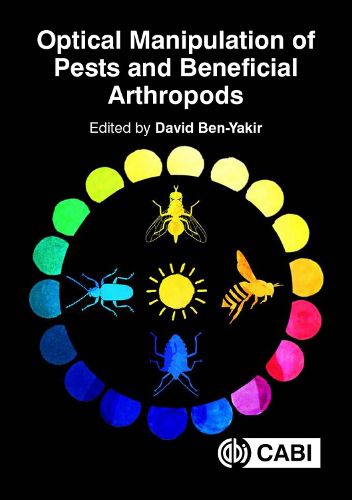Readings Newsletter
Become a Readings Member to make your shopping experience even easier.
Sign in or sign up for free!
You’re not far away from qualifying for FREE standard shipping within Australia
You’ve qualified for FREE standard shipping within Australia
The cart is loading…






Arthropods as pests in crops, vectors of diseases, pollinators, and natural enemies of pests are of huge economic importance. They affect livestock, human health and food supplies around the world. This unique book examines and reviews how light and colour can be used to enhance pest management in agricultural and medical applications by manipulating the optical responses of arthropods. Arthropods use optical cues to find food, oviposition sites and to navigate. Light also regulates their diurnal and seasonal activities. Plants use optical cues to attract or deter various species of arthropod. In this book, an international team of experts show how light can be used successfully to attract, arrest, confuse and deter arthropods as well as to disrupt their biological clocks. The book: Presents an up-to-date and thorough summary of what is known about how arthropods of agricultural and medical importance respond to visual cues. Describes techniques that use light to manipulate pests and beneficial insects and mites. Presents a broad discussion of the potential use of optical manipulation of arthropods to improve the health of plants, domestic animals and humans.
$9.00 standard shipping within Australia
FREE standard shipping within Australia for orders over $100.00
Express & International shipping calculated at checkout
Arthropods as pests in crops, vectors of diseases, pollinators, and natural enemies of pests are of huge economic importance. They affect livestock, human health and food supplies around the world. This unique book examines and reviews how light and colour can be used to enhance pest management in agricultural and medical applications by manipulating the optical responses of arthropods. Arthropods use optical cues to find food, oviposition sites and to navigate. Light also regulates their diurnal and seasonal activities. Plants use optical cues to attract or deter various species of arthropod. In this book, an international team of experts show how light can be used successfully to attract, arrest, confuse and deter arthropods as well as to disrupt their biological clocks. The book: Presents an up-to-date and thorough summary of what is known about how arthropods of agricultural and medical importance respond to visual cues. Describes techniques that use light to manipulate pests and beneficial insects and mites. Presents a broad discussion of the potential use of optical manipulation of arthropods to improve the health of plants, domestic animals and humans.